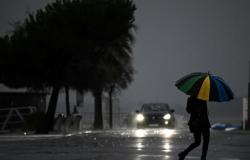By tracking the cycles of our star, scientists expect to soon observe a historic solar storm. If it could make it possible to observe the northern lights of an intensity never seen before, it could above all cause billions of euros in damage.
A major solar storm every 150 years? According to a recent CNRS publication, the Earth has been under the influence of more frequent and more intense solar storms than usual for several months due to a peak in the activity of our star which occurs every eleven years. These storms are caused by flares on the Sun that send charged particles into space. But one of them could be much more powerful than the others, according to astrophysicists.
This worrying hypothesis returns when another cycle has been reached and even already exceeded: that of 150 years. Because during the summer of 1859, our planet was hit hard by the “Carriton event4”, the most powerful solar storm ever observed and documented to date, recalls the CNRS which emphasizes that its intensity was three times greater to the storm which caused the Northern Lights in France last spring.
Above all, “American researchers estimated between 600 and 2,600 billion dollars the damage that a solar flare of this scale would cause if it occurred in our current technological world, in a report published in 2013,” reports Jean Lilensten, director of CNRS researcher and astronomer at the Institute of Planetology and Astrophysics of Grenoble, cited by the CNRS.
Because when they reach our planet, these storms can interfere with the technological systems we rely on every day. Solar storms can disrupt GPS signals, radio communications, and even cause power outages by affecting electrical grids.
In view of our connected world, an overpowering storm is cause for concern: “Knowing that the solar flare which caused the magnetic storm of 1859 took only 17 hours to reach the Earth – compared to two days for that of May 10, 2024 –, reach predicting such an eruptive episode would leave just enough time to protect our most sensitive infrastructures, by de-energizing them,” underlines the CNRS.
A maximum reached in 2025
While the Sun follows a cycle of approximately eleven years, we are currently in a phase where its activity is particularly strong, with a maximum expected to be reached in early 2025, which explains why these solar storms are more frequent.
Scientists closely monitor these events to try to limit the damage, such as by protecting satellites or taking steps to secure power grids.
Although we cannot prevent solar storms, we can prepare for their effects. This is why monitoring solar activity is so important, to minimize risks to our technologies. The CNRS thus evokes the establishment of a “space weather” to observe the moods of our star so precious to life on Earth.







